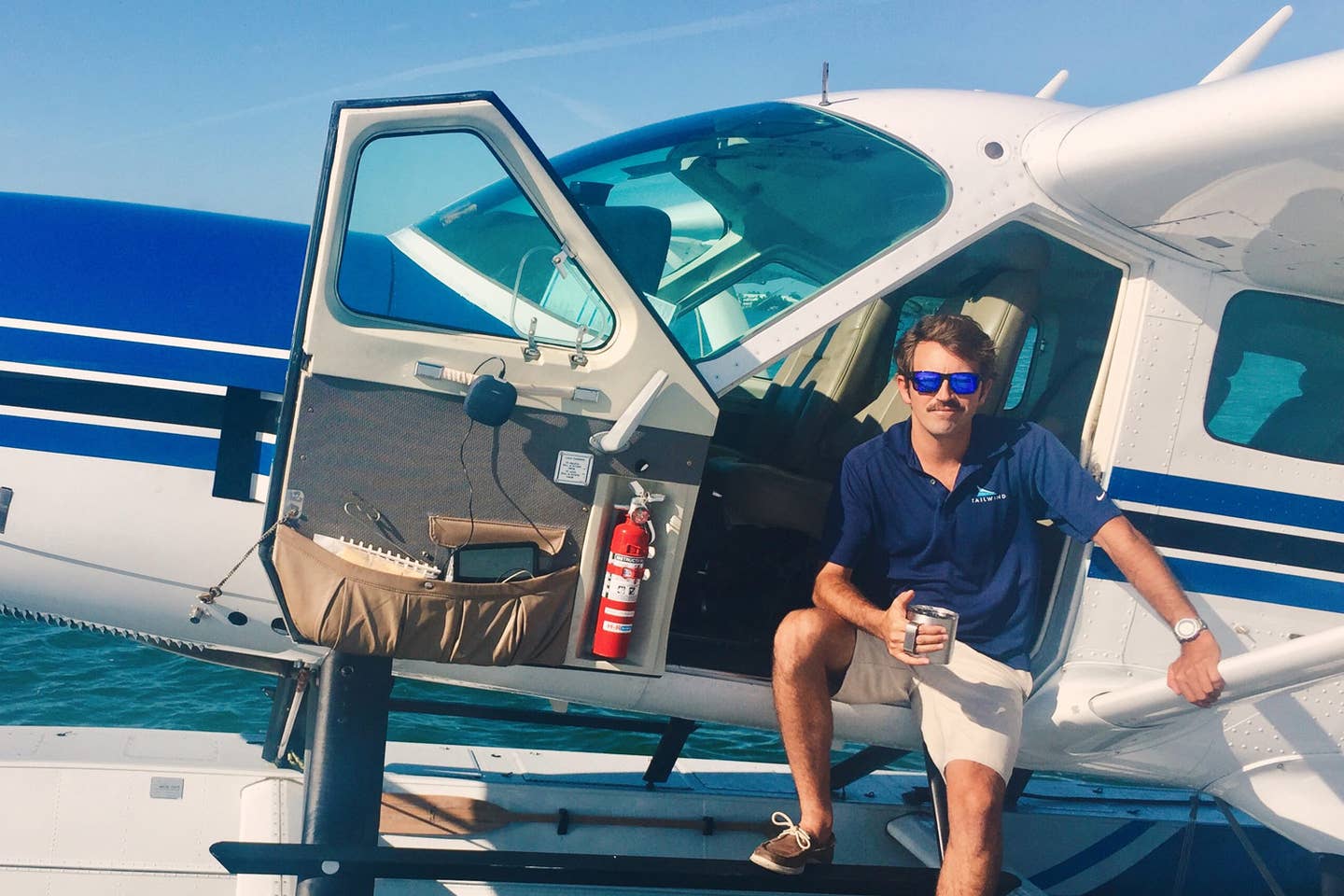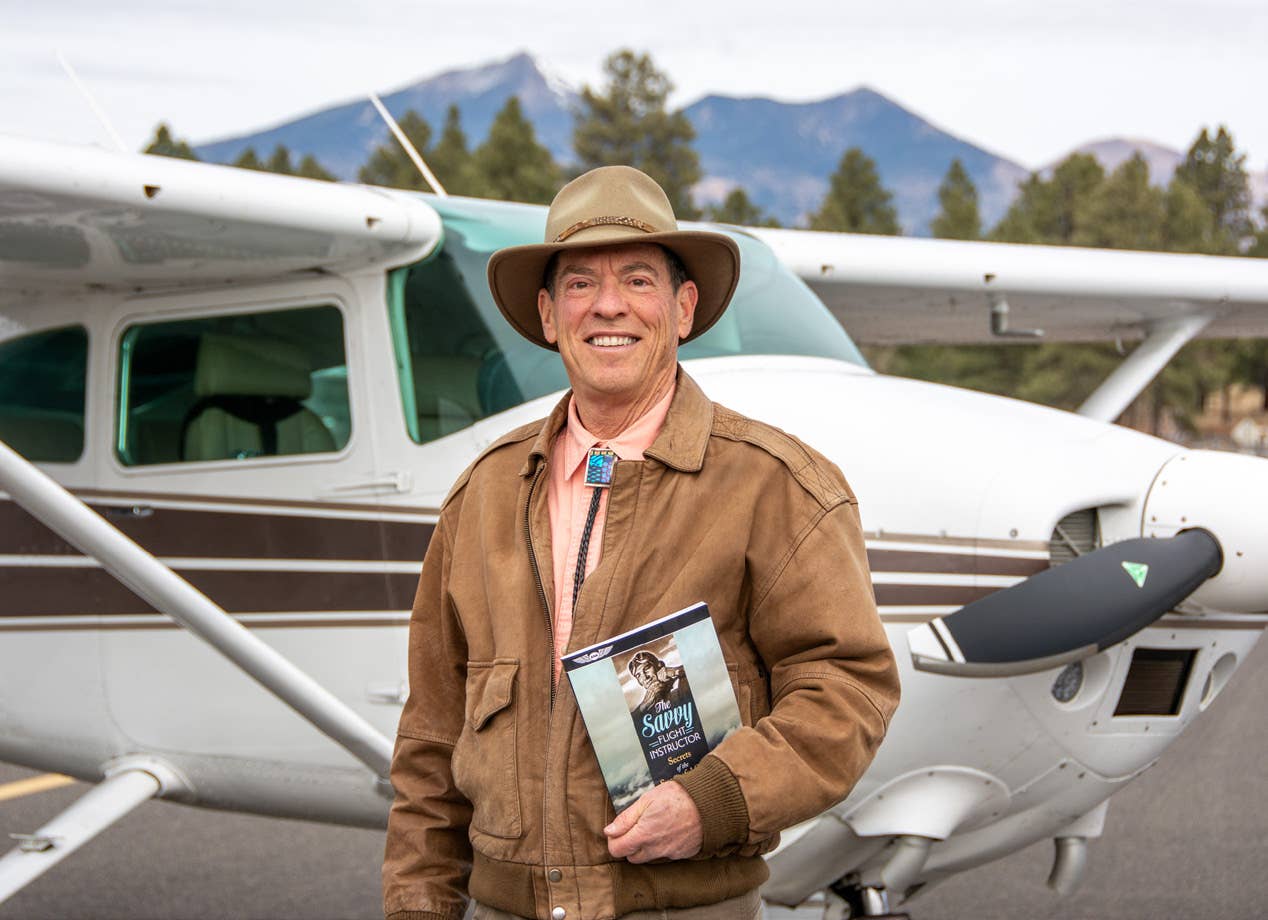
Lindenberger realizing his calling: “I was hooked on seaplanes.” Courtesy Holt Lindenberger
Careers are funny sometimes. Despite conscientious planning, they sometimes turn on a dime and point a person in the most unexpected direction. Holt Lindenberger completed his professional flight training with ATP in November 2013 and wanted to reward himself for all the hard work it took to earn his commercial, instrument and CFI ratings. “The training at ATP was pretty fast-paced,” he remembers and the competitive qualifications earned during the program open up countless career options as a pilot.
Lindenberger wanted a diversion, so in October 2014, he headed to Florida and added that single-engine rating following a weekend of fun splashing around in a Cub on floats. Lindenberger admits he never saw his seaplane rating as anything more than a fun way to blow off some steam.
“I read a surfer magazine that talked about the barefoot pilots of the Maldives,” Lindenberger says. “I thought that was the coolest thing I’ve ever heard of. These pilots would go out and surf with some professionals and anchor off one of these reef breaks. They’d just go surf with the guys, and I wondered if there’s a way to get a job like that. That’s the kind of thing I got to do.”
When he returned to reality after his flight training, Lindenberger found himself flying with dozens of students—all of whom wanted to become instructors to gather the flight time needed in order to be eligible for any of the regional airlines ATP works with. He headed out to a few regional-airline interviews himself but realized something didn’t seem right. “I really enjoy flying little airplanes.” So out of the blue, Lindenberger, an adventurer at heart, realized his calling: “I was hooked on seaplanes.”
While most ATP alumni are airline bound, graduates have the flexibility of choosing which direction to take their professional pilot career and Lindenberger started looking for the next step in his flying adventure. “I ran Google searches trying to figure out how I was going to build some floatplane time. I thought maybe I could earn a multiengine-seaplane rating somehow or go fly in the Maldives.” His plan included a possible job at Grand Canyon Airways to fly their Twin-Otters and then heading back to school for a multiengine-seaplane rating. But fate or luck—or whatever you might call it—stepped in. “One of my buddies found an ad for a pilot at Tropic Ocean Airways in Fort Lauderdale.” Tropic Ocean operates an all-Cessna fleet of 13 seaplanes, mostly Caravans. The company hired Lindenberger in November 2015.
In short order, he first upgraded to captain on a Cessna 208 on wheels. “I actually flew right seat on the Caravan at first, which was my first introduction to turbine engines.” In June 2016, he took command of a Caravan on floats. “I have nothing but good things to say about my time at Tropic Ocean,” Lindenberger says, but after 2½ years at Tropic Ocean, he was ready for the next adventure. “There are just so many opportunities for pilots these days,” he says. It’s a small community of seaplane pilots who possess any significant turbine experience, and Lindenberger quickly realized: “Seaplane jobs are paying pretty well.”
Read More: Pilot Stories
In May 2018, Lindenberger went to work for Tailwind Air LLC in Westchester, New York, as their primary on-demand Caravan floatplane pilot. The company also operates a number of jet aircraft. He’s now based near his airplane at Long Island’s MacArthur Airport and lives just five minutes from the airport. “Primarily, I fly people to the Hamptons from the 23rd Street seaport in Manhattan, where there’s only room for one airplane on the dock at a time. Some days, I’ve had as many as 10 airplanes waiting ahead of me to dock, when there also might be helicopters circling above.” In New York, the Caravan is the perfect airplane because a trip from 23rd Street to the Hamptons only takes 35 minutes. “On a bad-traffic day, it could take someone five hours to make the drive,” Lindenberger says. “I get to see all those cars backed up on the roads going out to the Hamptons. I hate traffic myself, but you gotta credit the traffic for keeping me employed.”
Lindenberger says Tailwind “flies charters to Maine and Connecticut and sometimes the Adirondacks. So there’s quite a variety of flying. On any given day, I might depart an airport VFR, go to the East River, and fly some of the helicopter routes down to the exclusions zones for a river landing.” He says it’s some of the choppiest water you’ll ever see flying floats—at least in the United States—because there’s always half a dozen ferries just ripping up the river nonstop. “That means 2-foot waves all over town. Flying the river in general is challenging because of the confined area, high-traffic airspace and busy waterways. The flying keeps your skills sharp across the board, because it’s probably one of the most well-rounded flying experiences you can have. Flight planning means you might have to reference sectionals, helicopter charts, low-IFR en route charts, satellite imagery and marine depth charts—and you might have to make a few calls for local knowledge. I love it all. Even in peak season when we are flying 14 legs in a day.”
Inbound back to 23rd Street, “I fly over La Guardia at 1,500 feet and then to the north tip of Roosevelt Island, where I descend to the join the East River exclusion at 1,100 feet. A lot of times, you go from a perfectly sunny day to IFR when the marine layers move in. Then I’m shooting a special VFR, and it gets pretty interesting.” He says, with certain wind directions, there’s a ton of turbulence off the buildings, “so it keeps me on my toes, even on calm days. But for me, it’s fun to stay engaged.”
Lindenberger spends spring and summer flying around New York, but just to keep things interesting, Tailwind sends him and the Caravan back to his old neighborhood in Florida during fall and winter to fly the Caribbean. “I’ve got a pretty good situation, and I’m happy with it,” he says. And what about those fancy jets Tailwind’s operating? “They’ve thrown those out there to me. But I do like my quality of life and my experiences. So right now, I’m enjoying being the seaplane guy.”

Sign-up for newsletters & special offers!
Get the latest FLYING stories & special offers delivered directly to your inbox






